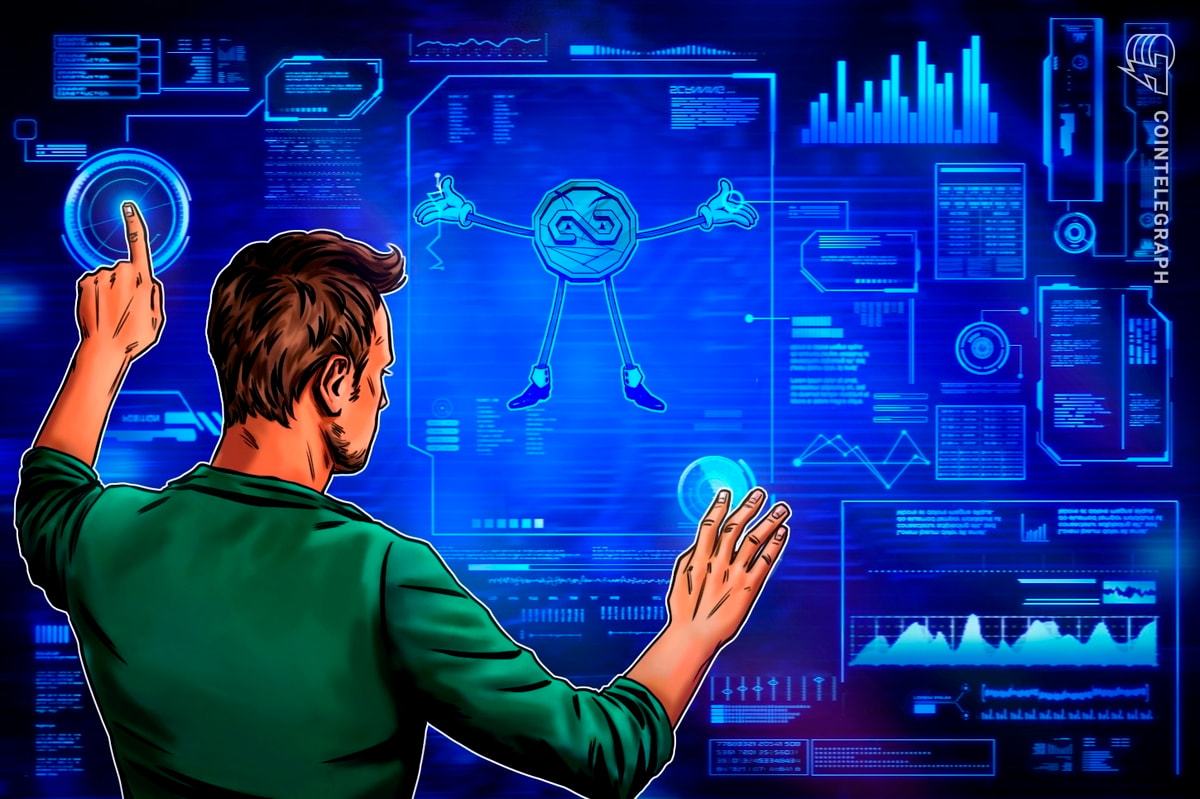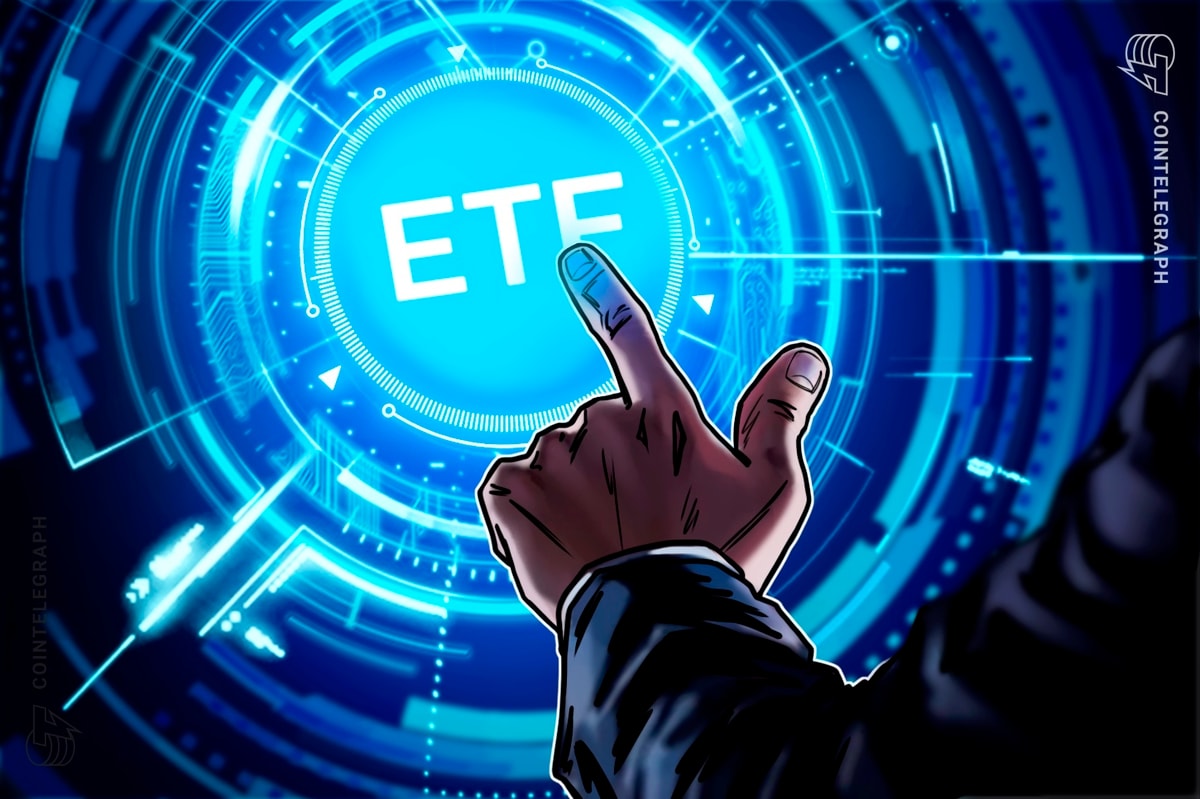The “information is the oil of the 21st century” narrative, penned by former Gartner exec Peter Sondergaard in the early 2010s, described the importance of knowledge in a digital world.
With the introduction of artificial intelligence (AI) for the masses, however, this narrative has been refined over the last few years. Due to the sheer amount of data required to train AI large language models (LLMs), data has become the new gold. Within the relatively narrow timeframe of five years, the global data created, captured, copied and consumed will be threefold, according to Statista.
The impact of AI can’t be denied in the datasphere, and investors seem to put their money where the data goes. Crunchbase estimates that more than $1 in every four dollars invested in United States-based startups has been channeled into companies working on AI-related projects in 2023, doubling the preceding four-year window.

Percentage of U.S. venture funding going to startups working on AI. Source: Crunchbase
These impressive numbers create an arms race with enormous flows of capital into investing in AI, and organizations soon realize that AI is dealing with surprisingly large-scale unsolved challenges for an industry that’s on the way to surpassing $200 billion in 2024 and is expected to reach $1.81 trillion by 2030.
Why AI needs blockchain?
AI uses data as its life source, which can enrich or poison digital life based on its management and operation. If the data fed into AI is not authentic and verified, the risk of creating bias in AI goes through the roof. For AI to be production-ready for the huge scale of impact that the technology promises, there’s a dire need to limit hallucinations, manage bias concerns, and avoid intellectual property infringements.
The rise of AI indicates an exponential growth in data processing, which brings an ever-growing demand for verifying and authenticating information. If big institutions and nearly every business use these massive efficiency and productivity tools in an information age, then it needs to be accurate.
Thanks to its innate features like immutability, traceability and transparency, blockchain stands as the perfect match to tackle major headaches related to AI. Harnessing the power of decentralization can surely enable maintaining verifiable truth over time. However, blockchain was too busy fighting its own demons — namely, the trilemma of achieving security, scalability, and decentralization — to lend a hand to businesses seeking a reliable infrastructure to set up shop in the AI space.
Scalability and interoperability
Most blockchain networks struggle to keep up with today’s bandwidth demands, making it virtually impossible to picture a future where such infrastructure becomes viable for the exponential growth of data. With its sharded multichain network that enables parallel processing of transactions, Polkadot aims to eliminate bottlenecks plaguing the legacy networks.

Sharding is an established technique in computer science that processes large amounts of data by breaking it into smaller, more manageable segments. When used in a blockchain context, Polkadot’s sharded multichain network allows for the simultaneous processing of numerous transactions on several chains. This improves scalability and positions Polkadot as an ideal infrastructure for handling the AI-driven data explosion.
Aside from the core benefits offered at the infrastructure level, the Polkadot ecosystem also houses multiple parachains — individual layer-1 blockchains that function within the Polkadot network — to expand its capabilities. Here are some examples:
Decentralized knowledge graph
AI is only as good and effective as the data it trains on, and this is why “feeding” it with verified data is crucial to prevent AI from hallucinating. OriginTrail, a Polkadot parachain that is building a decentralized knowledge graph, seeks to address data authenticity concerns.
OriginTrail organizes critical knowledge assets, making them discoverable and verifiable using the power of decentralization. Rather than trusting one central party to create and hold the knowledge graph on which AI training and search queries are conducted, OriginTrail incentivizes an open network of knowledge assets — supply chain data, product details or other real-world information — anyone can contribute to and verify.
As adoption of the @origin_trail DKG continues to expand, so does the count of #AI-ready Knowledge Assets! We're heading towards reaching 1 million Knowledge Assets published on the #DKG before the current Turing phase concludes, as we celebrate the creation of 500,000 assets… pic.twitter.com/FXvxkxzwcd
— OriginTrail (@origin_trail) August 18, 2023
The platform has established a collaboration with BSI, the United Kingdom's national standards body, to ensure transparency in pharmaceutical supply chains. The Next Generation Internet initiative of the EU also picked OriginTrail to help build advanced infrastructure for the European internet.
Co-processor for blockchains
Phala Network is a decentralized physical infrastructure network (DePIN)-powered coprocessor — the execution layer for Web3 AI. Phala’s tech stack enables AI to understand and interact with blockchains while providing toolkits to help developers build, ship and monetize smart contract-centric AI agents.

Phala aims to become the coprocessor for the entire blockchain ecosystem. Source. Phala Network
Phala’s AI Agent Contract allows developers to build smart contract-centric AI agents with the following benefits:
- Agentizing smart contracts: Developers can develop smart contract-centric AI agents for popular Web3 services and smart contracts. These AI agents can be regulated through a decentralized autonomous organization (DAO) to enforce business logic.
- Decentralizing ownership and monetization: Users can own their agents and build a profitable tokenomic model using the default tokenomic model provided or by customizing their own.
- Connecting to the internet of multi-agents: Agents on Phala are by default accessible to other cross-platform AI agents deployed on Autonolas, FLock.io, Morpheus, Polywrap and other similar platforms.
🔦✨ Spotlight on: Phala Network
— Polkadot (@Polkadot) May 1, 2024
As AI and blockchain technology converge, the need for scalable, interoperable and secure platforms capable of supporting AI's computational needs becomes more apparent.
🌐 In this context, Polkadot emerges as a key infrastructure, providing the… pic.twitter.com/WV7KTjroGC
AI network for P2P collaboration
Imagine a global network where artificial intelligence (AI) models collaborate and learn from each other. Instead of relying on a central authority, this network operates in a decentralized manner, increasing accuracy, minimizing corruption risk and improving efficiency.
This is the idea behind Bittensor, an open-source protocol that powers a decentralized, blockchain-based, tokenized machine learning network. Bittensor is an AI network that incentives the peer-to-peer (P2P) sharing and collaboration of decentralized machine learning models.
In this system, AI models can share knowledge, insights and even computational resources directly with one another. It’s like a digital marketplace where AI agents exchange information and improve collectively. The result of such networks is the democratization of AI by making it accessible to more people, not just big corporations or research institutions.
With its growing ecosystem and forward-looking vision, Polkadot seeks to play a vital role in the AI revolution. The project gives peace of mind for future upgradability as well as a robust platform that allows for the bandwidth and scalability to grow into the enormous processing needs of exponential data and information growth. As the brave new AI landscape fast approaches, Polkadot stands at the forefront, unlocking productivity and solving real-world challenges.
Disclaimer. Cointelegraph does not endorse any content or product on this page. While we aim at providing you with all important information that we could obtain in this sponsored article, readers should do their own research before taking any actions related to the company and carry full responsibility for their decisions, nor can this article be considered as investment advice.











